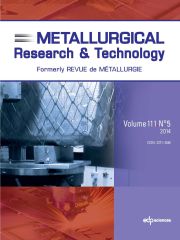No CrossRef data available.
Article contents
Time consideration in mass flow analysis; acontradiction?
Published online by Cambridge University Press: 08 December 2009
Abstract
In metals industry Mass Flow Analysis (MFA) has a long tradition.Combined with scenario calculation this method can for examplebe used to estimate the future development of scrap availabilityand metal composition. Despite the unknown inaccuracy ofsuch calculations what regional distribution of material, lifetimeor growth rates concerns highly valuable information can begenerated to support the industrial business strategy. When particular products or metal applications in functionalunits become the scope of such calculations besides massflow often energy consumption and emissions appear on theagenda. And, unfortunately, metals are recycled (of courseonly from a methodological and not from a resource point ofview). At that point MFA crosses the border from being a staticsnapshot of an existing system towards a time depending lifecycle approach. Besides volume, quality, and location time isintroduced as a fourth dimension and the dilemma starts. Inthe past one approach was to develop depreciation modelsto allocate the expenditures of mining and primary metalproduction of Copper and Aluminium according to the recycledcontent. But latter is even more disputable since metal recyclingcannot be treated as an alternative production route achievingthe original properties and chemical composition. And, as aresult of its electrochemical behavior, each metal cycle lookscompletely different compared to any other. Consequentlythe general acceptance of the existing allocation methods forrecycling in life cycle models is still low. In case of Aluminium the historic primary metal productioncumulates to an amount of almost 900 million tons worldwide.With the aid of recycling 75% of this material could be conservedin the current inventory in use. As this stock significantly contributesto todays and future's raw material supply the following questionarises: Can metallic materials have a defined history andtherewith an ecological hereditary debt, which will be reducedby further recycling cycles? If the answer would be yes, ona highly aggregated level, another more practical questionwould be whether such a credit should be based on the historicexpenditures of primary production or better considering thefuture recycling potential of the inventory in use. In these casesrecycling credits are either overestimated or underestimateddepending on the lifetime and herewith the deviation fromcurrent End of Life recycling practices.
- Type
- Research Article
- Information
- Copyright
- © La Revue de Métallurgie, 2009


